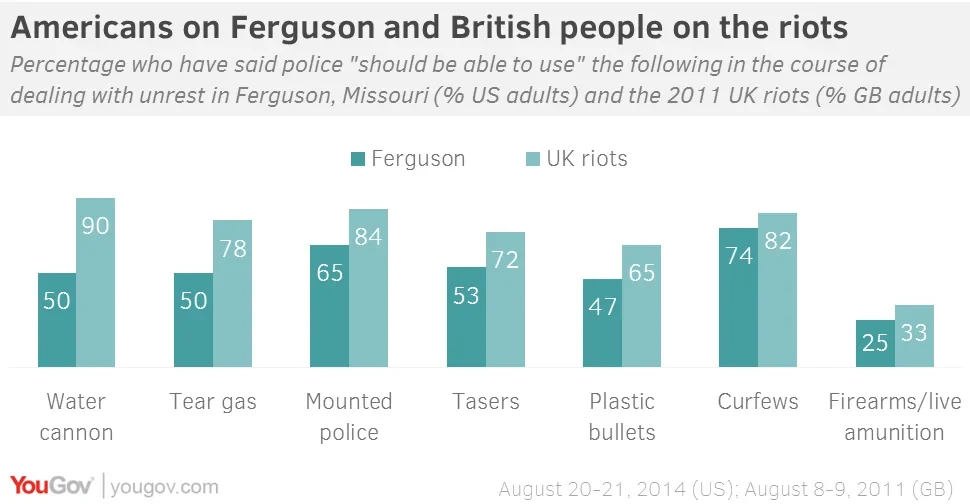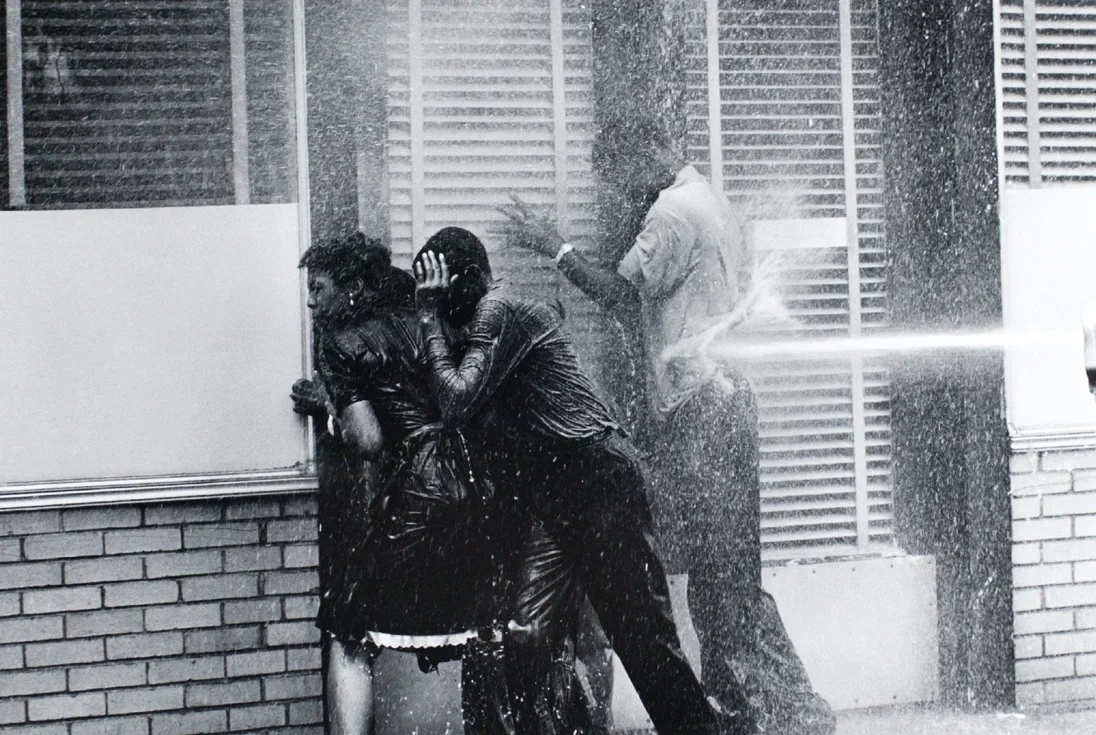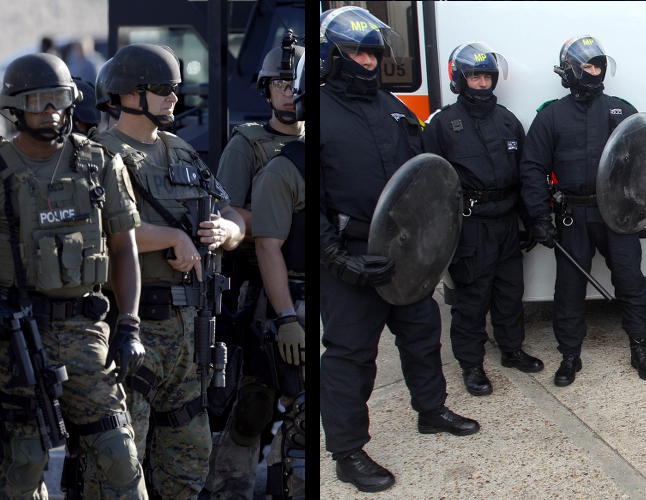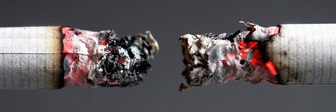A comparison between the public reaction to the UK riots in 2011 and the current unrest in the American town of Ferguson reveals that British people were much more supportive of harsh police tactics such as water cannons, tear gas – and even the use of live ammunition
The recent unrest in Ferguson, Missouri has led some commentators in Britain to point out similarities with the riots that rocked England in 2011. In both circumstances, the police shooting of a young black man in a community already ailed by poverty and racial tension led to protest, and ultimately violence, in the streets.
However, a comparison of what sort of measures the American public think the police should be using to deal with the violence in Ferguson, and what the British public wanted from police in 2011, shows that the UK public riots were much more relaxed about employing severe police tactics to quell the unrest. Each poll was conducted while the unrest was ongoing.
By a margin of 8 to 40 points, the British public were more supportive of the police using all of the methods listed, including tasers (support for their use is 19% higher in Britain), tear gas (+28%) and even firearms (+8%) – though only a minority in both countries backed the use of firearms.

In a separate question, 77% of British people supported the deployment of the army to help deal with the riots, while only 41% of Americans back the same move.
The widest difference is on the use of water cannons, which fully nine in 10 British people supported in 2011, compared to only half of Americans today.
Water cannons have a distinctive history in the United States: some of the most memorable images from the American Civil Rights Movement in the 1960s showed white police using firehoses on peaceful African-American protesters. Last week a CNN International presenter was reminded of just that history – courtesy of several Twitter users – when she suggested police in Ferguson use water cannons on the protesters there, many of whom are African-American.

May 1963 (photo: Charles Moore)
Of course, the riots, which started in London and then spread across England, were more widespread and impacted a larger share of the population than the events in Ferguson. Because of the different nature of each event, the British survey asked about the police response to 'recent riots', whilst the U.S. survey asked about 'unrest'.
Additionally, the situation in Ferguson appears to have actually escalated only after police responded the initial – largely peaceful – protests by deploying officers with military-grade equipment. Images soon appeared on social media and the news showing protesters and even journalists who had found themselves on the receiving end of some of the tools mentioned in YouGov's survey, including tear gas and rubber bullets. The perceived heavy-handedness of the police reaction has been widely criticised, and part of the national conversation surrounding the unrest has turned to the "militarisation" of local police departments.
By contrast, the British public were never faced with images of tear gas or water cannons actually being used in the streets of London: despite calls for more aggressive tactics, the officers responding to the riots were usually armed with no more than truncheons and conventional riot gear.
PA Image






